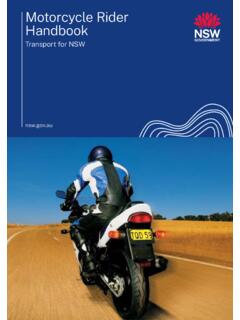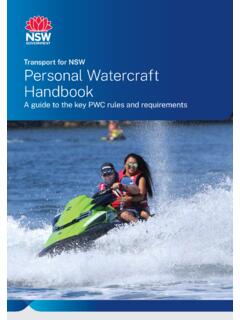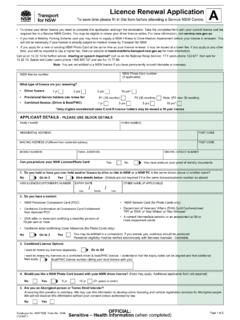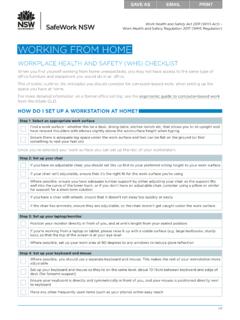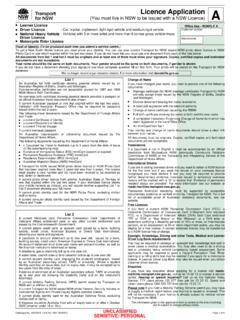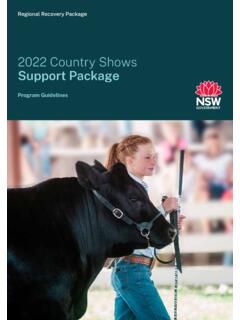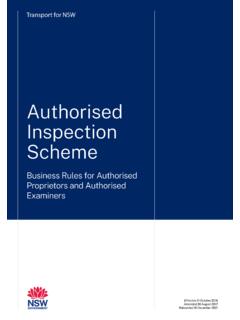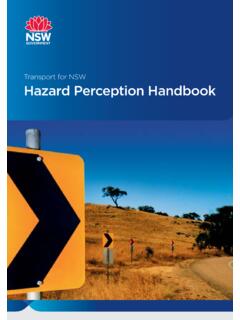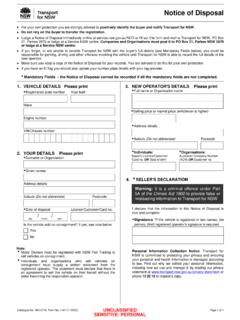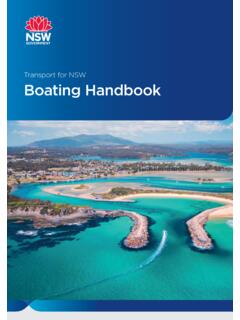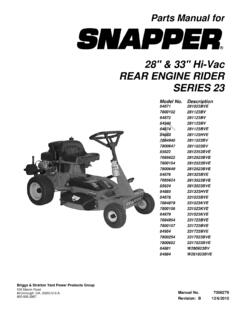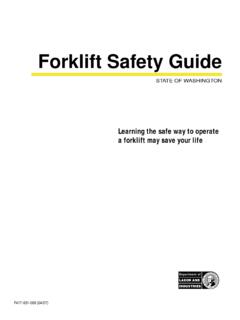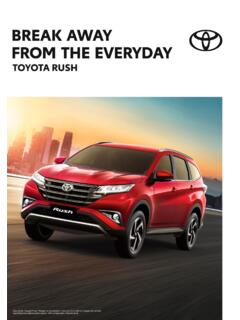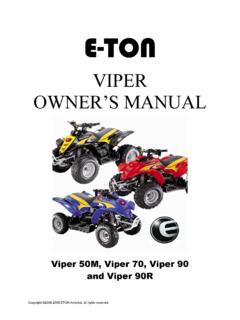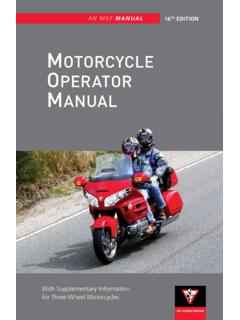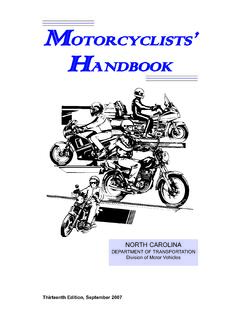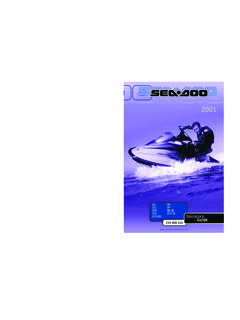Transcription of Vehicle Standards Information - VSI
1 Transport for NSW , Rev. 4 supersedes Rev. 3, issued 12 August 2014 Page 1 of 7 Vehicle Standards Information | Rev 4 | 4 December 2014 27 Moped and power-assisted pedal cycles Purpose This Vehicle Standards Information (VSI) No. 27 is intended to outline the differences between mopeds and power-assisted pedal cycles, and the respective registration and licensing requirements for their use on roads or road-related areas in NSW. It also explains the rules for bicycles fitted with petrol and other internal combustion engines. Mopeds A moped is a small motor cycle that: Has a piston engine with a capacity not exceeding 50 ml, or an alternative power source, eg electric motor Has a maximum speed not exceeding 50 km/h May be either two-wheeled or three-wheeled May be pedal assisted Is fitted with an identification plate (commonly referred to as a compliance plate).
2 FIGURE 1: TYPRICAL MOPEDS Registration In New South Wales, mopeds are required to be registered for use on roads or road-related areas. To do so, they must meet the construction and equipment requirements for motor cycles as set out in the Road Transport ( Vehicle Registration) Regulation 2017 (the Regulation) including compliance with the applicable Australian Design Rules (ADRs), and be fitted with an identification plate issued by the [Commonwealth] Department of Infrastructure, Transport, Regional Development and Communications (DITRDC). Licensing, safety and use Moped riders must hold a motor cycle rider s licence. They must wear an approved motor cycle safety helmet, and obey the same road rules as riders of motor cycles. , Rev. 4 supersedes Rev. 3, issued 12 August 2014 Page 2 of 7 Power-assisted pedal cycles A power-assisted pedal cycle is a bicycle that: Is designed to be propelled solely by human power, and Has one or more auxiliary (electric) propulsion motors attached to assist the rider.
3 This means that it must be possible to propel the bicycle only by the rider pedalling it. The primary driving force should be the rider, and the motor is only intended to help the rider, such as when going uphill or cycling into a headwind, or to cycle at a speed they cannot maintain solely by pedalling. There are two types of power assisted pedal cycles, described as follows: Power-assisted pedal cycle - maximum power output 200 watts The auxiliary motor/s must not be capable of producing a combined maximum power output exceeding 200 watts, whether or not the motor/s is operating. FIGURE 2: TYPICAL POWER-ASSISTED PEDAL CYCLES 200 WATTS Power-assisted pedal cycle - maximum power output 250 watts (a Pedalec ) A pedalec is a Vehicle complying with the requirements of European Standard EN 15194: 2009 or EN 15194:2009+A1:2009: Cycles Electrically power assisted cycles EPAC Bicycles.
4 To comply with EN 15194: The motor must be electric The maximum continuous power output of the motor cannot exceed 250 watts measured at the wheel Note: A motor that delivers 250 watts of continuous power can produce greater power for very short periods of time, which can be beneficial when pulling away at traffic lights or starting a hill climb. The rider must pedal the cycle to activate the motor* The motor must cut-off once the Vehicle reaches 25 km/h, or sooner if the rider stops pedalling The Vehicle must be certified by the manufacturer, and labelled as complying with EN 15194. The label must include the manufacturer s name, the motor s cut-off speed in km/h and its continuous rated power in watts. FIGURE 3: TYPICAL PEDALECS , Rev, 4 supersedes , issued 12 August 2014 Page 3 of 7 Registration Power-assisted pedal cycles that meet either of the criteria described above do not require registration in NSW.
5 A bicycle fitted with a motor (or motors in combination) that does not meet either of the above criteria is a moped or motor cycle and the conditions described under Mopeds on page 1 apply. Licensing, safety and use A rider of a power-assisted pedal cycle does not have to hold a rider s licence, but they must wear an approved bicycle helmet, and obey the same road rules as bicyclists. On-road enforcement Police carrying out on-road enforcement may ask the owner and/or user of a power-assisted pedal cycle to provide evidence that the power output does not exceed the applicable limit. If that evidence is not readily available, such as from the compliance label, it may be necessary to test the Vehicle on a certified dynamometer ( dyno ) to determine the maximum power output of its motor/s. Vehicles that are not power-assisted pedal cycles Bicycles fitted with internal combustion (eg petrol) engine Bicycles fitted with an internal combustion engine or engines are either mopeds, in which case the criteria outlined on page 1 apply, or small motorcycles.
6 A bicycle fitted with an internal combustion engine is not a power-assisted pedal cycle and from 1 October 2014 may not be used on any road or road-related area in NSW. FIGURE 4: BICYCLE FITTED WITH AN INTERNAL COMBUSTION engine This is an example of a bicycle fitted with a petrol engine driving the rear wheel. This motorised bicycle is classified as a moped and it requires full registration if it is to be used on a road or road-related area in NSW. There are certain motor vehicles that are being sold as power-assisted pedal cycles but which cannot be propelled solely by the rider for more than very short distances. Instead, the primary source of power is from the motor, and the rider can pedal if they wish. In some cases, the pedals do not rotate at all and are simply put on the vehicles in an attempt to disguise them as power-assisted pedal cycles.
7 These cycles can be readily identified by a number of means. Typically, their geometrical layout does not allow the ergonomic and effective riding position required for standard bicycles, including a seat that cannot be adjusted for height and pedals that are placed too far apart. As a result they cannot be pedalled for anything more than a nominal distance without causing the rider discomfort. , Rev, 4 supersedes , issued 12 August 2014 Page 4 of 7 FIGURE 5: POWERED CYCLE FITTED PEDALS ie a MOPED In this example it is obvious that pedalling is not the main means of propulsion. The seat is too low and the pedals are too small and widely spaced to be effective. This Vehicle is a moped. It should be noted that enforcement action has been taken against people who have been observed travelling on a supposed power-assisted pedal cycle for extended periods without pedalling and only using the motor.
8 Summary , Rev, 4 supersedes , issued 12 August 2014 Page 5 of 7 What laws apply? The laws applicable to the registration and use of mopeds and power-assisted pedal cycles are covered under a number of Acts and Regulations, and Australian Design Rules. The main requirements are summarised in this section; more Information is available from NSW Legislation, and DIRD, websites see page 6 for contact details. Road Rules 2014 In accordance with the Dictionary , bicycle means a Vehicle with 2 or more wheels that is built to be propelled by human power through a belt, chain or gears (whether or not it has an auxiliary motor), and includes: a. a pedicab, penny-farthing and tricycle, and b. a power-assisted pedal cycle*, but does not include: c. a wheelchair, wheeled recreational device, wheeled toy, or d.
9 Any Vehicle with an auxiliary motor capable of generating a power output over 200 watts (whether or not the motor is operating), other than a Vehicle referred to in paragraph (b), or e. any Vehicle that has an internal combustion engine or engines. Road Transport Act 2013 A road means an area that is open to or used by the public and is developed for, or has as one of its main uses, the driving or riding of motor vehicles. A road related area means: a. an area that divides a road, or b. a footpath or nature strip adjacent to a road, or c. an area that is open to the public and is designated for use by cyclists or animals, or d. an area that is not a road and that is open to or used by the public for driving, riding or parking vehicles, or e. a shoulder of a road, or f. any other area that is open to or used by the public and that has been declared under section 18 to be an area to which specified provisions of this Act or the statutory rules apply.
10 Also, in accordance with: Section 53, a person must not drive a motor Vehicle on any road or road-related area without being licensed for that purpose Section 54, a person who is disqualified from holding or obtaining a driver licence must not drive a motor Vehicle on any road or road-related area during the period of disqualification. This means that it is illegal for a person without a valid driver s licence to ride a moped on a road or road-related area. Road Transport ( Vehicle Registration) Regulation 2017 In accordance with Clause 15 of Schedule 1, the registration provisions do not apply to a power-assisted pedal cycle* other than one that has an internal combustion engine or engines. , Rev, 4 supersedes , issued 12 August 2014 Page 6 of 7 Road Transport (Driver Licensing) Regulation 2017 In accordance with Clause 99, a person is exempted from the requirements to hold a licence for driving any power-assisted pedal cycle* other than one that has an internal combustion engine or engines.
